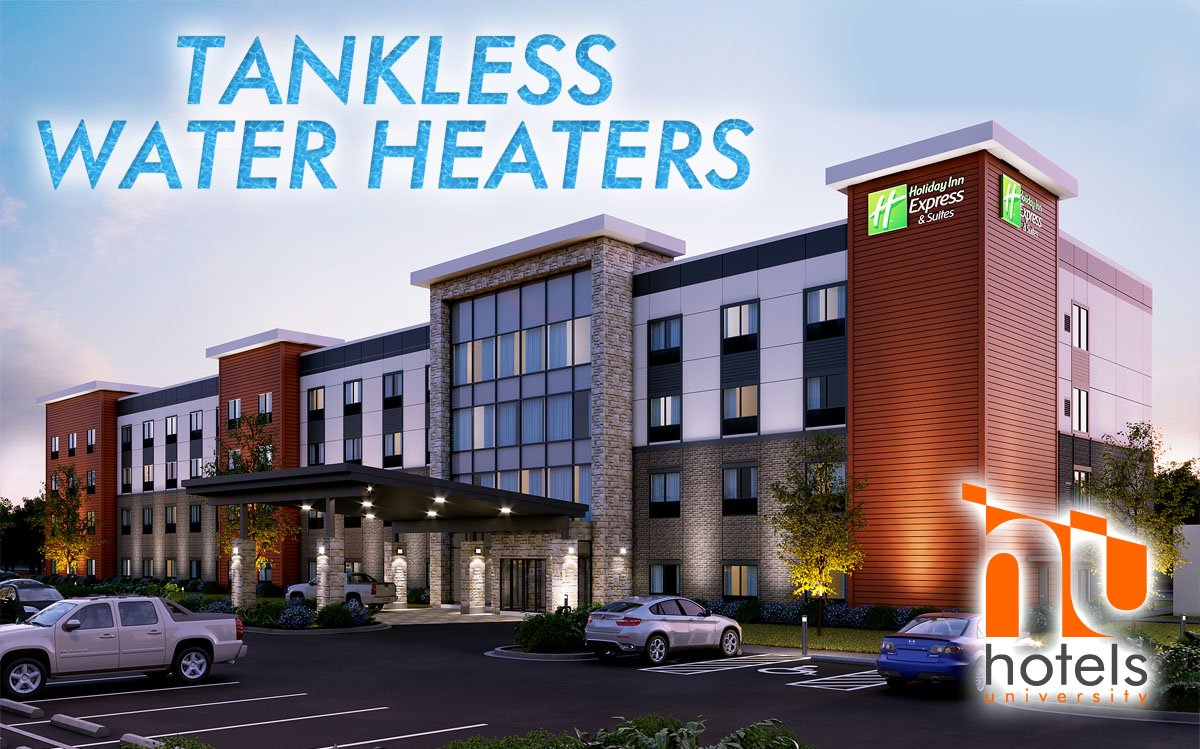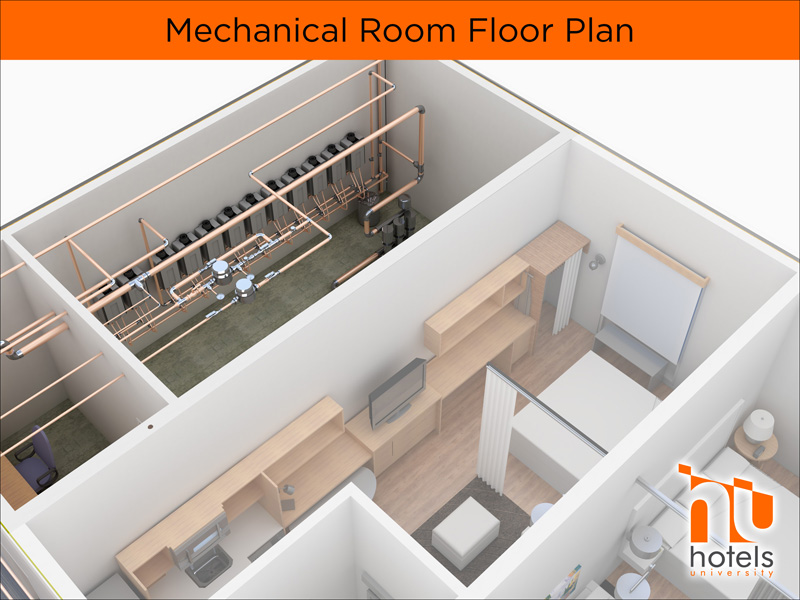Tankless Water Heater Systems
In our last newsletter, I shared the basic considerations for designing hot water systems in order to avoid the colonization of Legionella bacteria. Increasingly popular is the Tankless Water Heater System. In fact, we are now including tankless systems in nearly 50% of our hotel designs. Below I explain the basics of these systems for hotel application.
The Basics
- Nearly all commercial tankless heaters are powered by gas.
- The system heats water on demand and without the need for a tank. When a hot water tap is switched on, a gas burner heats the cold water, which travels through a pipe into the unit. A recirculation loop ensures that hot water is always available on demand.
- A typical 115 guest room hotel requires 10-12 wall-mounted tankless water heaters, which are typically around 3’ tall by 2.5’ wide. Please note that the unit sizes and number of units can vary significantly based on the water heater brand.
The Cost
- Tankless systems do not require thermostatic mixing valves (TMV), which are costly components. When compared to their tank counterparts, tankless systems are very competitively priced.
The Benefits
- Reduced Legionella Concerns – Since a tankless system does not store large quantities of hot water, the risk of Legionella is greatly reduced.
- TMV Not Required – Since there is no tank, a TMV is not required.
- Redundancy – Tankless units can be divided into groups with one group serving guest rooms (at 120F) and another dedicated to the kitchen and laundry facilities (at 140F). Also, if one of the units breaks down, the system only takes a nominal reduction in capacity and can continue to operate while the the other unit is being serviced. This process differs from the typical tank system where losing one unit may result in a 20% reduction in capacity.
If you have any questions about the benefits or challenges of Tankless Water Heater Systems, please contact our office.
Thank you,
Blair Hildahl
Blair@hotelsuniversity.com
608.304.5228






Recent Comments